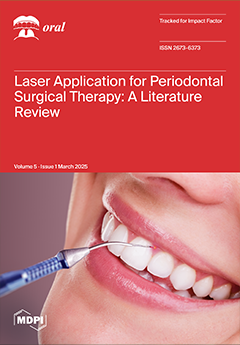Purpose: The purpose of this study was to compare multiple deep learning models for estimating age and sex using dental panoramic radiographs and identify the most successful deep learning models for the specified tasks.
Methods: The dataset of 437 panoramic radiographs was divided into training, validation, and testing sets. Random oversampling was used to balance the class distributions in the training data and address the class imbalance in sex and age. The models studied were neural network models (CNN, VGG16, VGG19, ResNet50, ResNet101, ResNet152, MobileNet, DenseNet121, DenseNet169) and vision–language models (Vision Transformer and Moondream2). Binary classification models were built for sex classification, while regression models were developed for age estimations. Sex classification was evaluated using precision, recall, F1 score, accuracy, area under the curve (AUC), and a confusion matrix. For age regression, performance was evaluated using mean squared error (MSE), mean absolute error (MAE), root mean squared error (RMSE), R
2, and mean absolute percentage error (MAPE).
Results: In sex classification, neural networks achieved accuracies of 85% and an AUC of 0.85, while Moondream2 had much lower accuracy (49%) and AUC (0.48). DenseNet169 performed better than other models for age regression, with an R
2 of 0.57 and an MAE of 7.07. Among sex classes, the CNN model achieved the highest precision, recall, and F1 score for both males and females. Vision Transformers that specialised in identifying objects from images demonstrated weaker performance in dental panoramic radiographs, with an inference time of 4.5 s per image.
Conclusions: The CNN and DenseNet169 were the most effective models for classifying sex and age regression, performing better than other models for estimating age and sex from dental panoramic radiographs.
Full article





